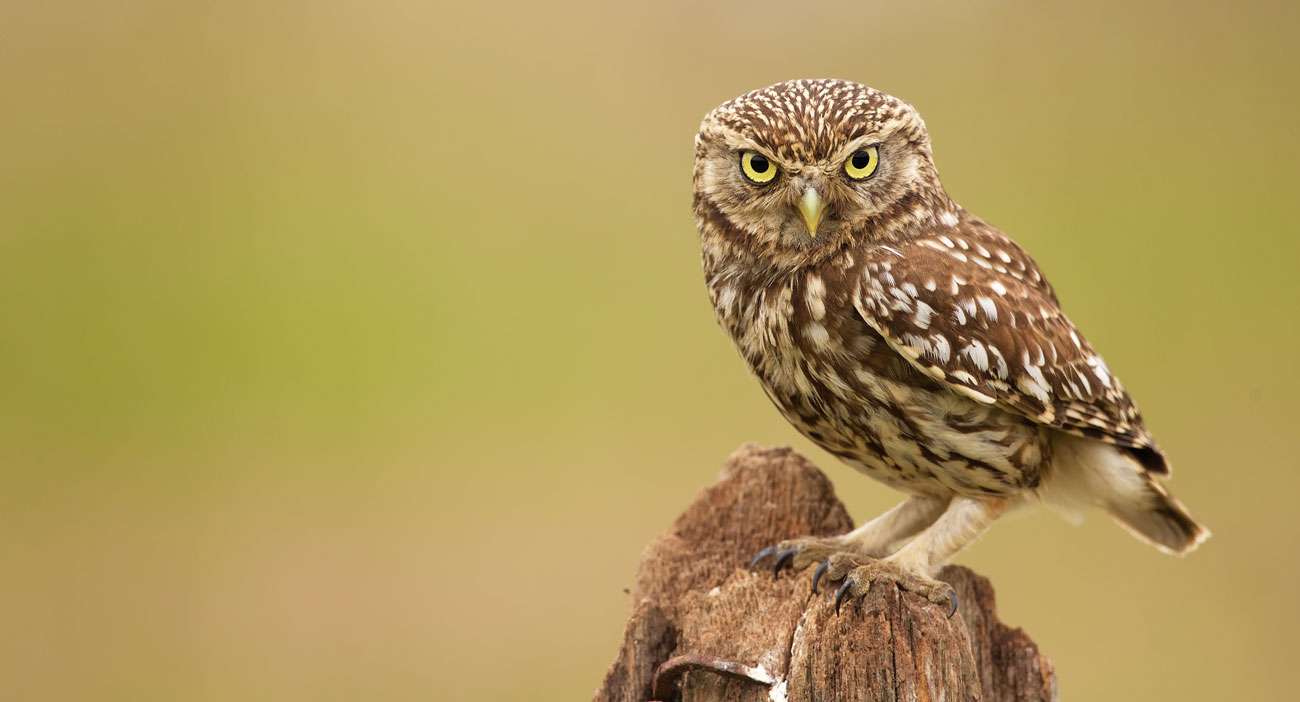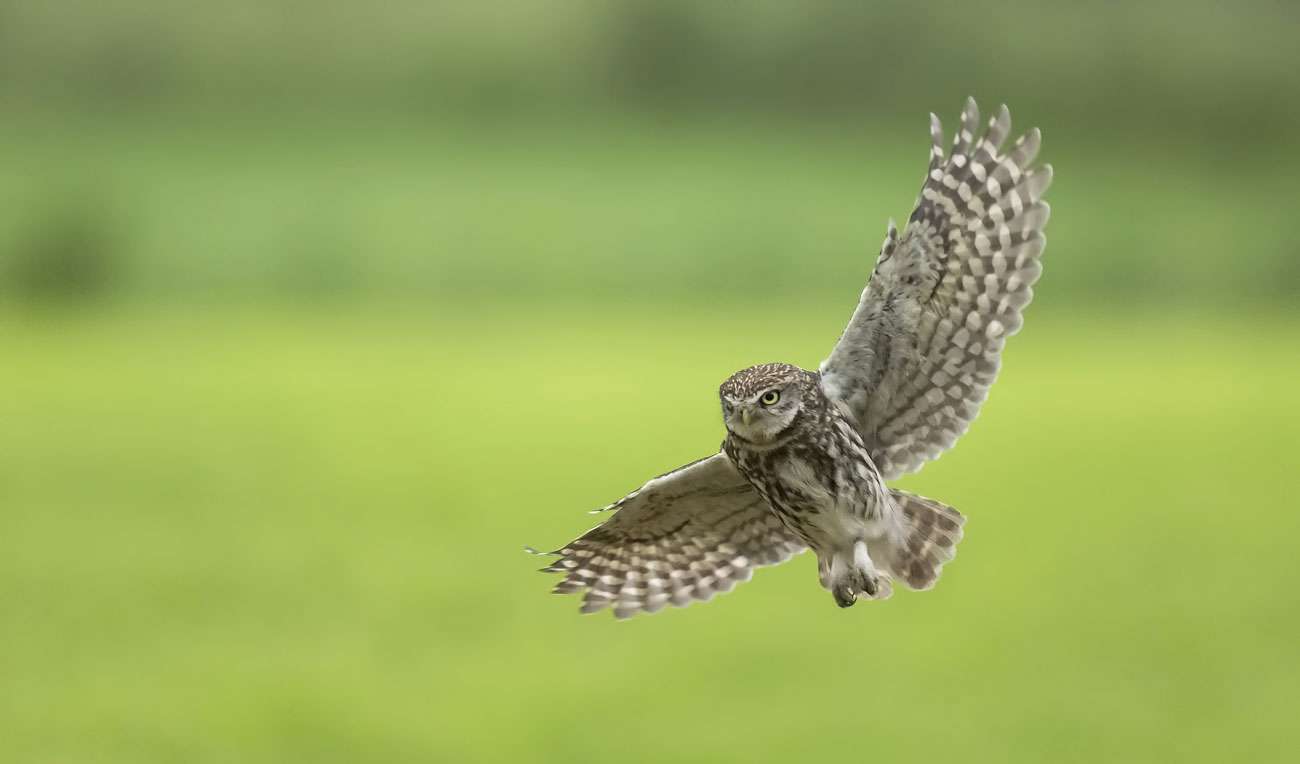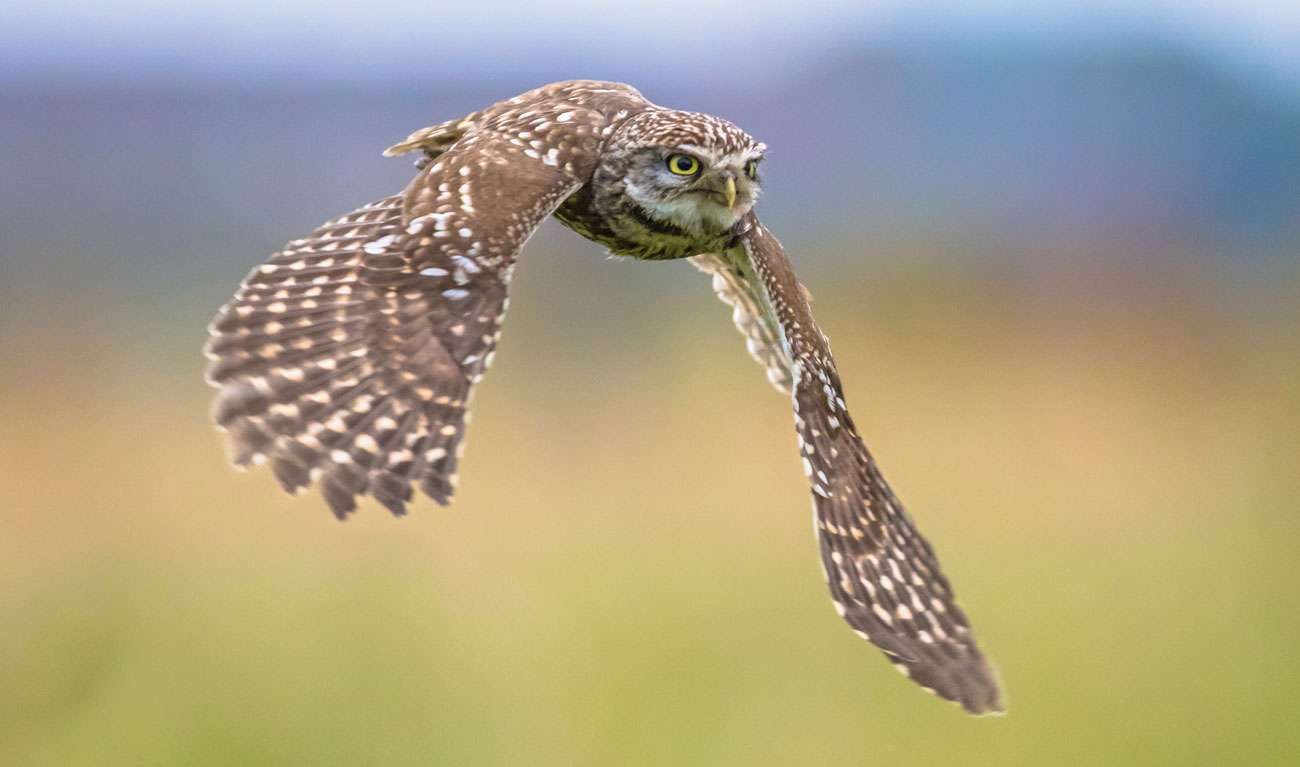
Little Owl (Athene noctua) giving you the eye
It’s a moonlit dusk in early March when suddenly a two-syllable scream breaks the silence. There it is again, a gently rising repetitious ‘ooo-eee’.
Is it a stoat or rabbit being strangled by a fox? You could be forgiven for thinking so. Whatever it is, it is taking a long time to be put out of its misery.
But then the far-carrying squeal comes again and there are a few muffled, shorter calls from something else in the same direction.
In fact you are hearing the hooting of Britain’s smallest owl, the Little Owl, and its mate. Far from being in pain this male is declaring its territory and expressing its happiness at imminent breeding.
I’ve been joyful to hear their welcome calls again in the last few days, around half a mile from my home.
For this resident species is increasingly in danger and in England its numbers have reportedly fallen by 25% in the last 16 years and 64% since the mid-1990s. But at least this pair has made it through the winter.
The Cranleigh area provides a typical picture of the threats these dumpy charmers, no more than 20 centimetres high, face in their fight for survival.
I have not done a full survey but, although it is widespread, this species has become scarce and I doubt our surrounding countryside has more than a dozen pairs.

Little Owl (Athene noctua) coming in to land
Ever-increasing road traffic accounts for some victims. Our lanes provide them with rich pickings such as scurrying frogs, beetles, worms or rodents. But motorists can easily mistake these predators in the dark for lumps of our much-maligned clay thrown from the wheels of a passing tractor.
Since I have been watching Little Owls around Cranleigh they have met with more than a little misfortune. A pair alongside the road to Shere could often be seen on a 15-foot-high oak tree stump where they nested. What a picture they were one winter as, eager to renew old acquaintances, they mated while thick snow fell all around.
Guess what? By next season their home had been chopped to the ground. Not for any good reason other than making things tidy.
Then there was the pair living near the car park in an oak tree in the field behind Stocklund Square. 6am on a quiet summer morning you could often spot one of them on a road sign by the mini roundabout outside the Rania curry restaurant. They were forced to make way for more new housing.
Another pair vanished a few years back after a large extension came a little too close to their tree on the edge of a copse.
Others around here have disappeared with the demise of farms, the tidying up of old outhouses and the conversion of many dilapidated barns into beautiful homes. I like it when I see there are thoughtful new residents who have erected nest boxes nearby!
If you’ve got the space, folks, go for it and do likewise. If the Little Owls take to it then you will be entertaining the offspring of – presumably initially – unwilling immigrants.
This species was originally from Europe, from where it spreads in various forms across the continent to Africa, and even to northern China.

Little Owl (Athene noctua) on the lookout for prey
Little Owls have probably bred regularly here since moving into the area after their 1896 introduction to Edenbridge, Kent. By 1904 they were well established as near to us as Horsham. Fruit growers at the time saw the owls as the answer to saving their Springtime blossoms from marauding Bullfinches.
These birds of prey found a niche but research later discovered they were little threat to gamechicks or songbirds. They preferred insects, other invertebrates, and small mammals.
Look for them on your lockdown exercise walks. They are diurnal so can be seen during the day, sitting on fence posts and old buildings.
Check old trees along field edges where you may suddenly realise that the little broken-off upright branch you are looking at is a well-camouflaged Little Owl.
‘Ah, how sweet’, you might think, but they don’t do cute. Make no mistake, they know how to fight. Just look at those powerful legs, feet, and talons!
And don’t expect them to look pleased to see you. They will have clocked you first, of course. They might bob up and down as they give you the once over and their piercing yellow eyes will stare back at you.
They often look shocked to have been spotted. There was probably shock for both a Little Owl and some residents in Ewhurst Road, Cranleigh, when it fell into their fireplace after accidentally doing a Santa down their chimney.
I’m pleased to say after a check-up and overnight stay at a local vet’s it was safely released to screech its happier notes for another season.
Twitter – @Crane_Spotter
Click here to see all of Robin Stride’s previous Crane Spotters.











